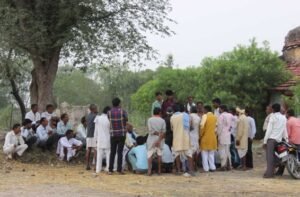
Why in News
-
Ho tribals in Jharkhand’s Kolhan region staged protests
-
They alleged interference in their traditional Manki-Munda self-governance system after the removal of some Mundas
-
About the Manki-Munda System
-
A traditional, decentralised self-governance model followed by the Ho tribe in Kolhan region, Jharkhand
-
Based on the authority of:
-
Munda: Village head
-
Manki: Pidh (cluster of 8–15 villages) head
-
-
Collectively responsible for resolving disputes and maintaining order
Origin & History
-
Pre-British Era
-
Community-driven governance
-
No land tax or external control
-
-
British Era Recognition
-
Ho and Kol revolts made direct rule unsustainable
-
In 1833, Captain Thomas Wilkinson codified the system into 31 rules (Wilkinson’s Rules)
-
Implemented in Kolhan Government Estate (1837)
-
Mankis and Mundas became intermediaries between the British and the community, ensuring some autonomy
-
How it Works
-
Munda
-
Head of a single village
-
Resolves local socio-political disputes
-
-
Manki
-
Head of a pidh (8–15 villages)
-
Handles appeals when disputes are unresolved at the village level
-
-
The system runs on customary law, not formal legislation, and continues post-Independence
Key Features
-
Hereditary Leadership
-
Passed from father to son
-
-
Decentralised & Community-based
-
Gram Sabha–like participation
-
-
Cultural Autonomy
-
Preserves Ho identity, traditions, and land rights
-
-
Legal Continuity
-
Wilkinson’s Rules still valid as no effective alternative exists
-
मानकी-मुंडा स्वशासन प्रणाली (हो जनजाति, झारखंड):
क्यों समाचार में
-
झारखंड के कोल्हान क्षेत्र में हो जनजाति ने विरोध प्रदर्शन किया
-
उन्होंने कुछ मुंडाओं को हटाए जाने के बाद अपनी पारंपरिक मानकी-मुंडा स्वशासन प्रणाली में हस्तक्षेप का आरोप लगाया
-
मानकी-मुंडा प्रणाली के बारे में
-
झारखंड के कोल्हान क्षेत्र में हो जनजाति द्वारा अपनाई गई पारंपरिक, विकेन्द्रीकृत स्वशासन प्रणाली
-
अधिकार आधारित:
-
मुण्डा: गाँव का मुखिया
-
मानकी: पिढ़ (8–15 गाँवों का समूह) का मुखिया
-
-
विवादों को सुलझाने और व्यवस्था बनाए रखने के लिए सामूहिक रूप से जिम्मेदार
उत्पत्ति और इतिहास
-
पूर्व- ब्रिटिश काल
-
समुदाय आधारित शासन
-
भूमि कर या बाहरी नियंत्रण नहीं
-
-
ब्रिटिश काल में मान्यता
-
हो और कोल विद्रोहों ने प्रत्यक्ष शासन को असंभव बना दिया
-
1833 में कैप्टन थॉमस विल्किंसन ने इस प्रणाली को 31 नियमों (विल्किंसन के नियम) में संहिताबद्ध किया
-
1837 में कोल्हान गवर्नमेंट एस्टेट में लागू किया गया
-
मानकी और मुण्डा ब्रिटिश और समुदाय के बीच मध्यस्थ बने, जिससे कुछ स्वायत्तता सुनिश्चित हुई
-
यह कैसे काम करता है
-
मुण्डा
-
एक गाँव का मुखिया
-
स्थानीय सामाजिक-राजनीतिक विवादों का समाधान करता है
-
-
मानकी
-
पिढ़ (8–15 गाँवों का समूह) का मुखिया
-
ऐसे विवादों पर अपील सुनता है जो गाँव स्तर पर नहीं सुलझ पाते
-
-
यह प्रणाली प्रथागत कानून पर आधारित है, औपचारिक कानून पर नहीं, और स्वतंत्रता के बाद भी जारी है
मुख्य विशेषताएँ
-
वंशानुगत नेतृत्व
-
पिता से पुत्र को सौंपा जाता है
-
-
विकेन्द्रीकृत और समुदाय आधारित
-
ग्राम सभा जैसी भागीदारी
-
-
सांस्कृतिक स्वायत्तता
-
हो पहचान, परंपराओं और भूमि अधिकारों को संरक्षित करती है
-
-
कानूनी निरंतरता
-
विल्किंसन के नियम आज भी मान्य हैं क्योंकि कोई प्रभावी विकल्प मौजूद नहीं है
-




